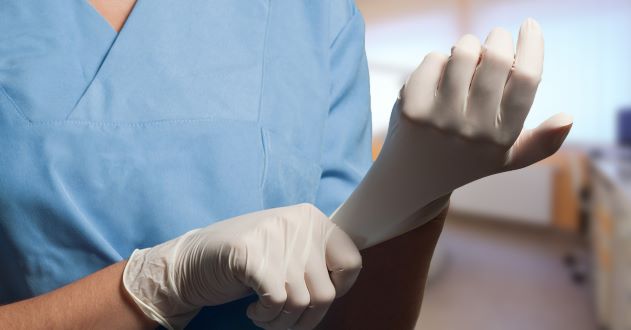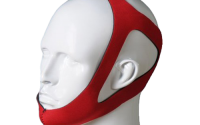Things to Consider When Buying Medical Gloves
Medical rubber gloves are an important item of protective equipment (PPE) in many different work environments where there is a potential for contact with blood, body fluids or other potentially infectious materials. Single-use gloves are designed to be worn once and then disposed of, while reusable gloves can be worn multiple times. Both types are paramount in protecting workers from exposure to harmful substances and preventing the spread of infection.
Given the crucial role that protective medical grade gloves play in safeguarding workers, selecting the right pair is the key to maintaining the health and wellbeing of employees. When purchasing gloves for your organisation, there are a number of important factors to consider in order to ensure that you are getting the most suitable product for your needs.

Which Gloves Are Best for Medical Use?
There’s no one-size-fits-all answer to this question – the type of glove that is most appropriate will depend on the specific circumstances and requirements in your field of expertise. Several universal criteria should be taken into account when you’re packing your medical bag, regardless of the intended application.
Type of Material
The material from which the gloves are made is a major consideration when selecting medical grade gloves. Different materials offer different levels of comfort, dexterity, resistance to tearing and puncturing, and so on. Common glove materials used in healthcare settings include:
- Latex – For most medical settings, latex gloves are a pleasant, affordable solution that offers considerable stretchiness and sensitivity. Since the human immunodeficiency virus (HIV) outbreak in the 1980s, they have been a common sight in many healthcare facilities. Despite their popularity, however, latex gloves can cause allergic reactions in some people due to the presence of protein particles.
- Nitrile – With a longer average shelf-life than regular latex gloves, nitrile models are among the finest disposable gloves on the market. They are also less likely to cause allergic reactions and provide good resistance to a variety of chemicals.
- PVC – Short for polyvinyl chloride, this synthetic material is commonly used in disposable gloves and offers good resistance to many chemicals. They’re less stretchable than latex or nitrile gloves and can become brittle at low temperatures, in spite of their widespread use.
- Chloroprene – A synthetic rubber, chloroprene offers many of the same benefits as latex, but without the possibility of triggering allergic reactions. It’s also more resistant to heat and cold, which can make it a good choice for use in environments with varying temperatures.
- Chemo – As their name implies, chemo gloves are permitted for usage during chemotherapy. PPE is usually advised since chemotherapeutic medication exposure might be dangerous.
Size and Fit
An ill-fitting pair of gloves is not only uncomfortable, but can also impede agility and increase the risk of tearing or puncturing. As such, you should choose gloves that fit snugly and allow ample hand movement.
Check your hand size before purchasing gloves, and always follow the manufacturer’s sizing guidelines to ensure a comfortable, form-fitting pair.
Thickness
How thick the gloves need to be will depend on the application. In general, thicker gloves offer more protection against punctures and abrasions, while thinner gloves provide greater range of motion and better tactile sensitivity.
Think about the level of protection that is required in your line of work and select gloves accordingly. If you’re not sure, err on the side of caution and choose a thicker pair – it’s always better to be safe than sorry.

Sterile vs. Non-Sterile
Sterile gloves are single-use gloves that have been treated to kill any harmful bacteria or microorganisms that may be present on the surface. They are typically used in surgical settings, but can also be employed in other circumstances where sterility is of utmost importance.
Non-sterile gloves, on the other hand, don’t include this treatment and are therefore less expensive. They’re often used in medical settings where sterility is less of a concern, such as during routine examinations or when handling non-invasive tools and instruments.
Powdered vs. Non-Powdered
Powdered gloves are coated with a fine powder that makes them easier to put on and take off. They’re commonly used in settings where frequent glove changes are required, as their powdery texture helps to absorb sweat and moisture. Some people, however, are allergic to the powder used on these gloves, which is why you should check in with your healthcare provider before using them.
Non-powdered gloves, as the name implies, don’t have a powdered coating. They provide a more natural feel and are less likely to cause allergic reactions, which means they’re a good choice for people with sensitive skin. They’re also less likely to cause powder-related contamination.
Cuff Type
The cuff is the part of the glove that covers the wrist and forearm. Generally speaking, there are two main types of cuffs – rolled and beaded.
Rolled cuffs have a softer edge that helps to prevent irritation and hand fatigue. They’re often used in settings where agility is required, such as during delicate surgical procedures.
Beaded cuffs have a more pronounced edge that provides a better seal against the skin. This type of cuff is often used in settings where there is a greater risk of exposure to fluids and other contaminants. The only downside is that they can be more irritating to the skin.



